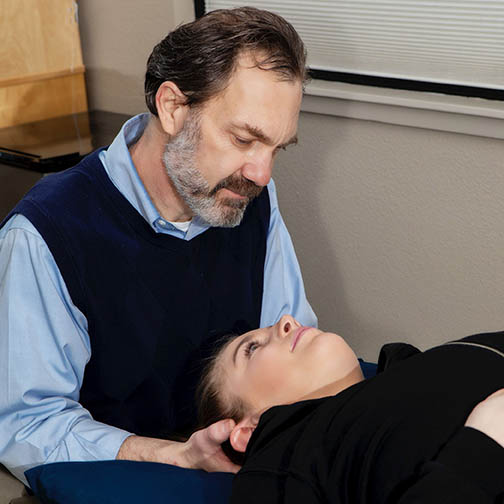 Fascial Counterstrain (FCS) is an innovative system of manual therapy that has its roots in the tradition and science of osteopathic manipulation. It is a very gentle, effective approach to treating dysfunction and pain in the human body, and it has a wide range of clinical applications for both acute and chronic conditions: for example, headaches, back and neck pain, digestive disorders, and post-concussion syndrome just to name a few. It can serve as a stand-alone therapy or as an adjunct to other forms of rehabilitation.
Fascial Counterstrain (FCS) is an innovative system of manual therapy that has its roots in the tradition and science of osteopathic manipulation. It is a very gentle, effective approach to treating dysfunction and pain in the human body, and it has a wide range of clinical applications for both acute and chronic conditions: for example, headaches, back and neck pain, digestive disorders, and post-concussion syndrome just to name a few. It can serve as a stand-alone therapy or as an adjunct to other forms of rehabilitation.
Because FCS evolved from the osteopathic tradition, it views the body holistically as one functional unit. This concept is important because effective treatment of neck pain, for example, might require consideration of the pelvis or even some other anatomical region of the body. However, FCS goes far beyond this clinical point of view in its ability to identify the primary source of a patient’s pain. As its name implies, FCS addresses dysfunction of the fascia—or connective tissue—that covers every organ, nerve, artery, muscle, bone, ligament, tendon, vein and lymphatic vessel of the body. Recent research has demonstrated that ALL fascia is innervated and has contractile qualities. Consequently, fascia has the ability to go into spasm as a protective response to injury or illness, and this protective spasm can generate pain and dysfunction that persist indefinitely until they are accurately identified and skillfully treated.
FCS practitioners consider the fascia of ALL the body’s major physiological systems during evaluation and treatment. While treating a patient’s hip pain, for example, the FCS practitioner will certainly address any musculoskeletal issues in the hip joint that need to be treated. However, he/she will also consider other physiological systems that may need to be addressed so that treatment is comprehensive and complete—for example, the lymphatic system, the arterial system, the visceral system, or others. FCS practitioners use their hands to identify areas of localized tenderness associated with a particular fascial system in spasm. Once identified, the strained tissue is gently compressed, shortened, or positioned to effect a therapeutic release, which results in the alleviation of pain and reduction of tension in the body. Success of each tissue manipulation is easily verified by simply re-checking the area of localized tenderness, which is usually no longer painful.
Unique to the Fascial Counterstrain diagnostic process is the “cranial scan.” That is, the FCS practitioner will palpate the patient’s cranium to identify which fascial system is involved and where in the body treatment is required. This powerful diagnostic tool helps the FCS practitioner provide precise and effective treatment.
For more information about Fascial Counterstrain, visit www.counterstrain.com.